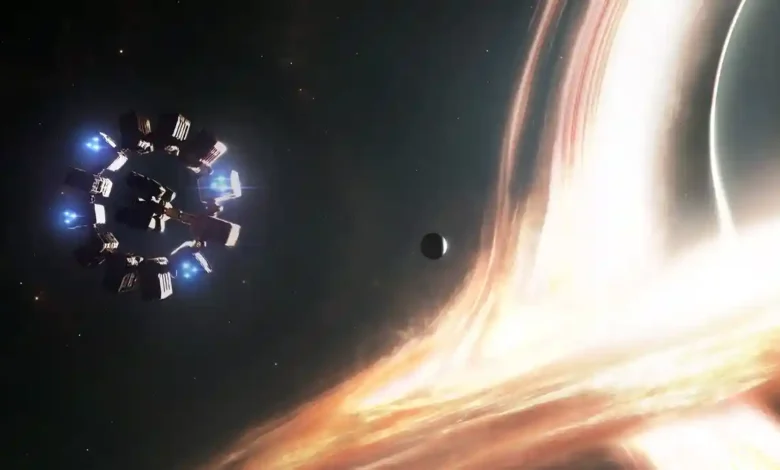
Imagine a world where dust storms blot out the sun, crops wither under an invisible plague, and humanity teeters on the brink of oblivion. This isn’t just dystopian fiction—it’s the chilling premise of Christopher Nolan’s 2014 masterpiece, Interstellar. But what if this scenario isn’t as far-fetched as it seems? As we grapple with escalating environmental crises in 2025, from climate change to biodiversity loss, the film’s core theme of seeking a new home in the stars prompts a profound question: Do we possess—or can we develop—the technologies to detect and reach a habitable exoplanet if Earth becomes uninhabitable? In this in-depth exploration, we’ll dissect Interstellar‘s narrative, draw parallels to our planet’s real threats, and evaluate cutting-edge advancements in space exploration. Buckle up; this journey through science, survival, and speculation might just redefine your view of humanity’s cosmic destiny.
Unraveling the Heart of Interstellar: A Tale of Desperation, Discovery, and Human Resilience
At its essence, Interstellar is a gripping saga of humanity’s last-ditch effort to evade extinction. Set in a near-future Earth ravaged by a catastrophic blight—a fungal-like disease decimating crops and turning the atmosphere toxic—the film paints a bleak picture of a dying world. Former NASA pilot Joseph “Coop” Cooper, played by Matthew McConaughey, is thrust into a secret mission to traverse a wormhole near Saturn, scouting potential habitable planets in another galaxy. The blight isn’t just a backdrop; it’s the catalyst for profound themes of sacrifice, love, and the indomitable human spirit.
The plot unfolds with meticulous precision: Earth, once a thriving blue marble, now suffocates under dust bowls reminiscent of the 1930s Dust Bowl, but amplified by global crop failures. Wheat has vanished, okra is next, and corn clings to survival as the last viable staple. Professor Brand (Michael Caine) reveals NASA’s covert Lazarus missions, where astronauts like Dr. Mann (Matt Damon) were sent to evaluate distant worlds. Cooper’s team encounters black holes, time dilation, and tidal waves on alien shores, all while grappling with the emotional toll of leaving loved ones behind. The film’s climax hinges on gravity-defying revelations: Love transcends dimensions, and future humans engineer the wormhole as a lifeline.
Thematically, Interstellar delves deeper than sci-fi spectacle. It explores the tension between individual survival and collective destiny, portraying sacrifice as the moral imperative. Cooper’s bond with his daughter Murph (Jessica Chastain as an adult) symbolizes hope amid despair, echoing how personal connections fuel grand endeavors. Evil lurks in human frailty, as seen in Dr. Mann’s betrayal, driven by isolation and self-preservation. Ultimately, the movie posits that humanity’s salvation lies not in abandoning Earth but in evolving beyond it—through exploration, innovation, and an unyielding will to endure. It’s a narrative that invokes curiosity: What lengths would you go to save your species? And thought-provoking: Is our drive for the stars a noble quest or a dangerous distraction from fixing our home?
Echoes of Interstellar‘s Blight in Our Real-World Environmental Nightmares
While Interstellar‘s blight is fictional, it mirrors escalating threats that could push humanity toward extinction-level events. In the film, the blight is an airborne microbial scourge causing lung issues and crop annihilation, potentially wiping out oxygen-producing plants. Real-world analogs abound: Crop diseases like the Irish potato blight of the 1840s, which starved millions, or modern wheat rust and rice blast, responsible for 10-40% of global losses. But the parallels extend to broader crises.
As of 2025, Earth’s top environmental perils include global warming from fossil fuels, accelerating biodiversity loss, and food waste exacerbating scarcity. Climate change amplifies droughts, like those in Central America risking millions’ lives through failed harvests. Fossil fuel dependence traps us in a cycle of rising temperatures, while overexploitation of resources—deforestation, overfishing—mirrors the film’s resource depletion. Pests, infections, and shifting climates already threaten staple crops, evoking the blight’s inexorable spread.
These issues aren’t abstract; they’re urgent. The UN warns that without action, food systems could collapse under combined pressures of warming and biodiversity erosion. Provocatively, Interstellar sidesteps climate change as the villain, focusing on blight to emphasize inevitability—but critics argue it underplays solvable problems like emissions reduction. This raises a tantalizing hypothetical: If our planet faces a similar fate, are we prepared to look skyward for salvation?
The Hypothetical Horizon: Detecting Habitable Worlds in the Near Future
Fast-forward to reality: Could we identify a new home if necessity demands? The answer is a resounding “yes, with accelerating progress.” By 2025, NASA’s exoplanet tally has surpassed 6,000, a milestone underscoring our rapid detection capabilities—just three decades after the first confirmed exoplanet. These worlds, orbiting distant stars, include rocky planets in habitable zones where liquid water might exist—prime candidates for life.
Key advancements fuel this hunt:
- Telescopic Titans: The James Webb Space Telescope (JWST), launched in 2021, has revolutionized spectroscopy, analyzing exoplanet atmospheres for biosignatures like oxygen or methane. In 2025, JWST detected potential life signs on K2-18b, a sub-Neptune world. Upcoming Extremely Large Telescopes (ELTs), like the 40-meter giants, promise direct imaging of Earth-like planets by the 2030s.
- Detection Methods Evolving: Traditional techniques like transit (watching stars dim as planets pass) and radial velocity (measuring stellar wobbles) have been refined. Kepler and TESS missions paved the way, but 2025 sees PLATO and ARIEL satellites enhancing precision for habitable zone scans. Direct imaging, bolstered by advanced coronagraphs to block starlight, is nearing the ability to spot Earth analogs.
- Breakthrough Discoveries: Recent finds include GJ 3998 d, a super-Earth in a red dwarf’s habitable zone, ideal for atmospheric studies, and a concealed super-Earth around a Sun-like star, dubbed “Earth 2.0” for its potential oceans. BEBOP-3 b, a circumbinary planet, highlights diverse systems.
These tools aren’t static; AI-driven analysis sifts through data, predicting habitability with unprecedented accuracy. Imagine: In a blight-like crisis, we could pinpoint targets within decades, not centuries.
Bridging the Void: Near-Future Technologies for Interstellar Travel and Colonization
Detection is one thing; reaching a new home is another cosmic leap. Interstellar‘s wormhole is speculative, but real tech edges toward feasibility. By 2025, innovations in propulsion and habitats make interstellar voyages conceivable within generations.
- Propulsion Paradigms: Chemical rockets won’t cut it for light-year distances. Enter nuclear thermal propulsion, tested by NASA for faster Mars trips, scalable to stars. Ion drives, like those on Dawn, offer efficient thrust. Radical ideas include laser sails: Breakthrough Starshot aims to propel nanocraft to Proxima Centauri at 20% lightspeed using ground-based lasers. Wormhole research, while theoretical, gains traction with quantum breakthroughs.
- Missions on the Horizon: NASA’s Interstellar Mapping and Acceleration Probe (IMAP), launching in 2025, maps the heliosphere, paving paths beyond our system. Artemis program tests lunar habitats, precursors to deep-space colonies. Private ventures like SpaceX’s Starship envision Mars outposts by 2030s, with interstellar extensions.
- Colonization Essentials: AI and robotics dominate: Autonomous drones terraform worlds, 3D-print habitats, and sustain life. Reusable rockets slash costs, while asteroid mining provides resources. Ethical AI agents could manage multi-generational ships, ensuring psychological and genetic viability.
Challenges loom: Relativistic speeds cause time dilation, echoing the film’s heart-wrenching separations. Vast distances demand cryosleep or generation ships. Costs? Astronomical. Yet, 2025 trends—AI integration, reusable tech—suggest we’re agentic enough to adapt.
The Ultimate Dilemma: Save Earth or Seek the Stars?
Interstellar provokes us to ponder: Is fleeing Earth defeatist? Real threats demand dual action—mitigating climate woes while advancing space tech. Biodiversity loss and warming are reversible with policy shifts, unlike the film’s inevitable blight. Ethically, colonizing exoplanets raises questions: Who goes? What about indigenous life? Thought-provokingly, our cosmic curiosity might save us here first, fostering innovations like sustainable agriculture from space research.
In conclusion, Interstellar‘s theme of transcending extinction resonates deeply in 2025, as we tally exoplanets and prototype star-faring tech. We have the means to develop these tools—JWST’s gaze, laser propulsion’s promise— if necessity arises. But the real question lingers: Will we act before it’s too late, or wait for the stars to call? This isn’t just science; it’s our story. What role will you play in humanity’s next chapter?
Follow Odinozz on social media. Click here.



